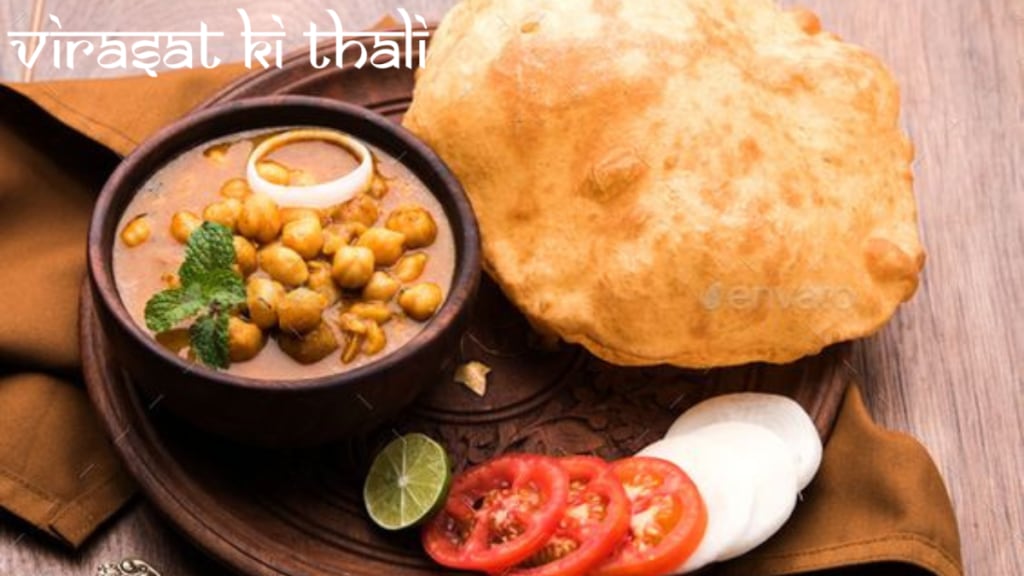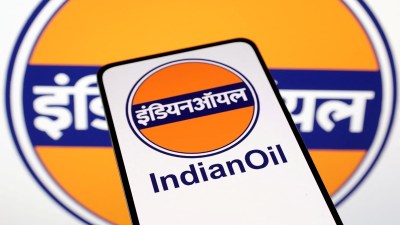Chole Bhature, a beloved dish cherished across India today, has a rich and intriguing history that traces its roots back to the tumultuous days of the Partition of India in 1947. As the cold winds of winter settle over the capital, Delhi, hundreds flock to savor the warmth and flavor of this iconic combination of spicy chickpea curry (chole) and deep-fried bread (bhatura).
Today we delve into the captivating journey of chole bhature, exploring its origins, its migration to India, and its rise to popularity in the bustling streets of Delhi.
The enchanting duo
The heart of chole bhature lies in the harmonious union of two components – the robust chickpea curry and the pillowy bhatura. This culinary match made in heaven has captured the palates of generations. Often, it is accompanied by lassi, pickles, or a sprinkle of onions, elevating its taste to an unforgettable level.
A tale of migration and inspiration
The story of chole bhature is intrinsically tied to the partition of India in 1947, a time when families were torn apart, lives were upended, and daily routines were disrupted. However, amidst the chaos and despair, hope and innovation emerged. Peshori Lal Lamba, a refugee from Lahore, migrated to India with not just dreams of a better life but also a recipe that would etch its place in Delhi’s culinary history. He established the Kwality restaurant in Connaught Place, where he introduced the city to his iconic chole, alongside sandwiches and other snacks.
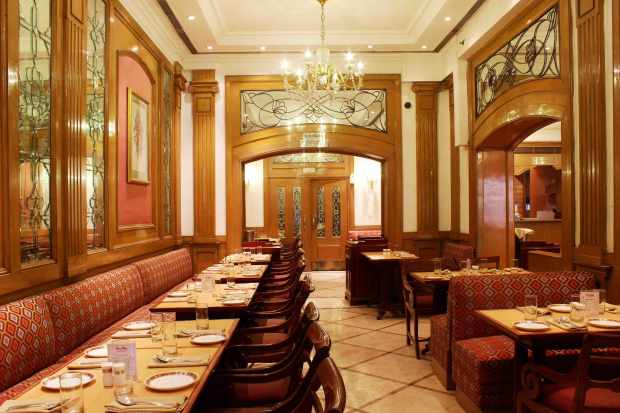
Another contender in the chole bhature legacy is Sita Ram, who, with his son Diwan Chand, founded Sita Ram Diwan Chand. It’s said that Sita Ram migrated from West Punjab to Delhi, serving the first plate of chole bhature for 12 annas. Today, the business is carried on by his grandson, Pran Nath Kohli.
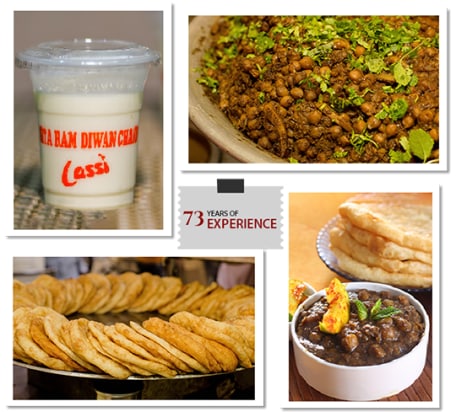
An ancient heritage
The origins of chole bhature can be traced back to the Middle East, where a similar dish called Chana Masala existed. This dish, involving spiced chickpeas served with flatbread, found its way to India through ancient trade routes. It’s believed that the Mughal rulers played a role in introducing Chana Masala to the Indian subcontinent, blending Persian, Turkish, and Indian culinary traditions.
Rise to popularity
While the exact inventor of chole bhature remains elusive, it’s believed that this delectable dish gained prominence in the early 20th century. Dhabas, roadside eateries known for their affordable and delicious offerings, played a crucial role in its popularization. These establishments flourished as India’s road networks expanded, making travel more accessible to the masses.
Today, chole bhature is not limited to dhabas; it has found a place in parties and festive occasions, solidifying its status as a beloved Indian dish. In fact, it’s celebrated annually on October 2nd, a testament to its enduring popularity.
Legends surrounding its invention
Numerous legends surround the invention of chole bhature. Some attribute its creation to a man from Haryana who served boiled chickpeas with baked flour to a hungry lady, while others believe it was introduced by the Mughals, who drew inspiration from the Persian dish chula. Regardless of its origin, there’s no denying the sheer delight this dish brings to countless taste buds.
A culinary work of art
Chole bhature may appear simple, but it’s a culinary masterpiece. The secret lies in the flavorful chickpea gravy, enriched with a blend of Indian spices, including coriander, curry leaves, garam masala, cumin seeds, ginger, garlic, and more. When paired with soft, salty fried bhaturas, this dish transports the diner to a gastronomic paradise.
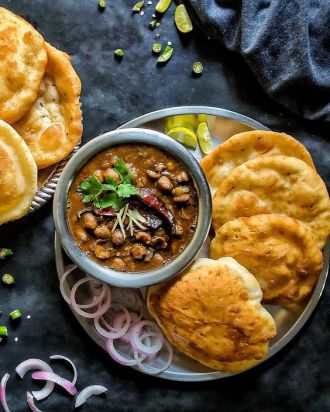
The historical roots
The history of chole bhature is intertwined with the cultural tapestry of India. While it’s challenging to pinpoint its exact origin, it’s believed to have evolved over centuries.
The Mughal influence
During the Mughal era, India witnessed the fusion of Persian, Turkish, and Indian culinary traditions. The Mughal rulers were known for their love of rich and flavorful dishes, which played a pivotal role in shaping the Indian culinary landscape. It’s plausible that the concept of spicy chickpeas paired with fried bread, akin to modern chole bhature, took root during this period.
The Spread of Chana Masala
Chana Masala, a dish similar to chole bhature, was likely introduced to India through trade routes. As spices and culinary traditions traversed borders, Chana Masala found its way into the Indian subcontinent, further enriching the local cuisine.
Emergence in the early 20th century
While the precise birth of chole bhature remains shrouded in history, it’s believed that this delectable dish gained prominence in the early 20th century. This era marked the rise of dhabas, roadside eateries that catered to travelers and locals alike. With the expansion of India’s road networks, dhabas became popular, offering affordable and flavorful food to the masses. Chole bhature naturally found a place on their menus, steadily capturing the hearts and taste buds of all who indulged.
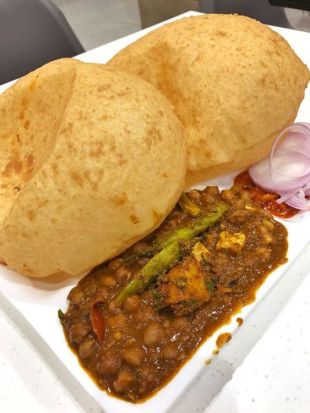
A culinary tradition that endures
Today, chole bhature stands as a testament to the enduring power of traditional Indian cuisine. Its history is a story of evolution, adaptation, and the amalgamation of diverse culinary influences. From the grand feasts of the Mughal emperors to the humble dhabas along India’s highways, this dish has transcended time and socio-cultural boundaries to become a beloved part of India’s gastronomic heritage.
Chole Bhature is not just a dish; it’s a testament to resilience, innovation, and the enduring power of good food to bring people together. Its journey from the partition era to the streets of Delhi is a testament to the indomitable spirit of India and the love for delicious, hearty cuisine. With each bite, chole bhature tells a story – a story of history, hope, and the timeless joy of eating together.
